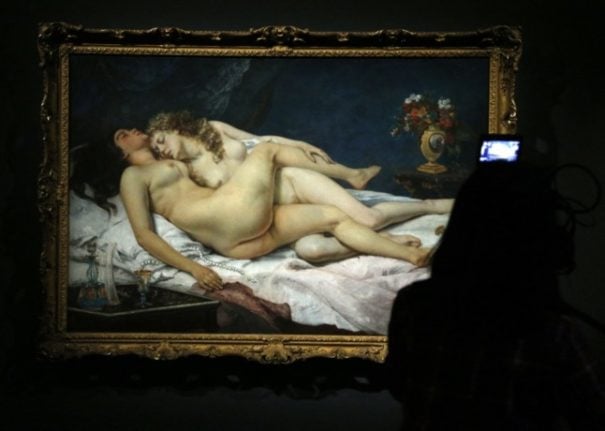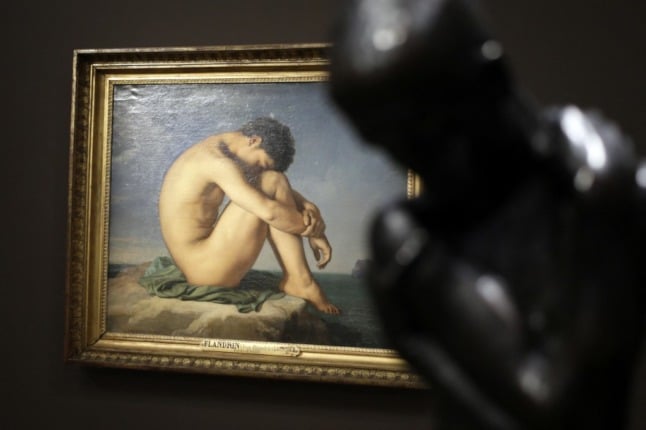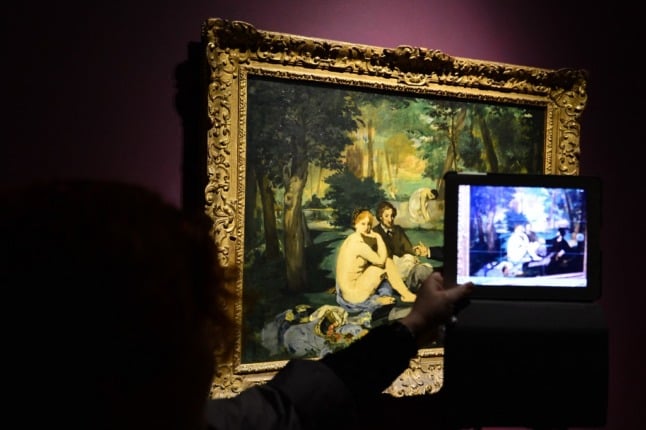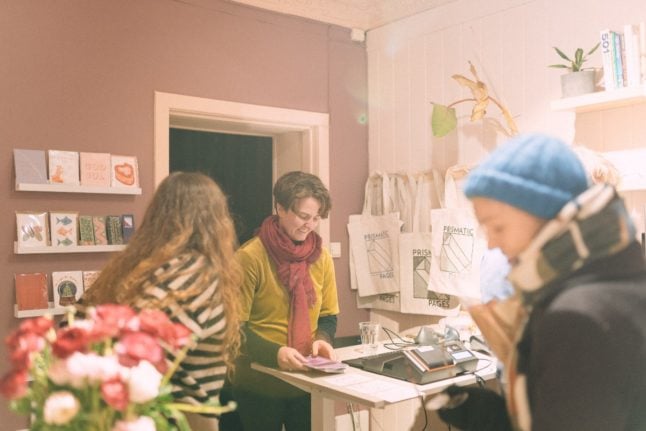The online guides to the Louvre and Musée d’Orsay museums are produced by the porn website Pornhub and provide a list of the best erotic artworks in each museum, plus directions of how to get there – so you don’t need to waste your time looking at paintings of people in clothes.
The Classic Nudes series has been ruffling some feathers since it was posted online earlier in July, with the Uffizi museum in Florence threatening to sue. Bosses at the Louvre have said only that they are ‘dismayed’, while the Musée d’Orsay has remained silent on the subject.
The guide for the Musée d’Orsay lists 11 erotic artworks, together with a tongue-in-cheek commentary, and a location for each piece within the museum.

Among the works featured are;
- Le déjeuner sur l’herbe by Edouard Manet (1863) – which features a group having a picnic in which the woman has lost her clothes (the men remain fully dressed in three-piece suits and ties).
- Un combat des coqs by Jean-Léon Gérôme (1846) – a nude couple watching a cock fight (that’s cockerels fighting, just to be clear).
- L’origine du monde by Gustave Courbet (1866) – more than 150 years after it was first painted, the intimate close-up of female genitalia is still making waves. In 2019 Facebook had to pay damages to a French teacher whose account was closed when he posted a picture of the famous artwork.
The guide for the Louvre includes:

- Portrait of Madeleine by Marie Guillemine Benoist (1800) – groundbreaking in several senses, this painting is one of the few on the list by a woman, and shows a topless black woman, painted just six years after the abolition of slavery in France’s colonies.
- Diane sortant du bain by François Boucher (1742) – one of many paintings on the list showing women having a bath, this features the Greek goddess Diana and her favourite nymph apparently surprised by the artist in the process of drying off after a bath.
- Le Jeune homme nu by Hippolyte Flandrin (1835) – most of the flesh shown in both the galleries is female (because that’s the patriarchy for you) but here we have a more rare male nude, a study of a young man sitting and looking rather sad and pensive.
As is hopefully clear, the Pornhub guides are explicit in nature and not suitable for children.
Both museums, however, form a great day out for all the family and contain a lot of fully-clothed artwork too. At present both are operating reduced visitor numbers due to health rules, so advance booking to recommended.




 Please whitelist us to continue reading.
Please whitelist us to continue reading.
Prefer Xhamster but anything is better then protesters.
Needs a gay version.
British Museum did an official one several years ago.